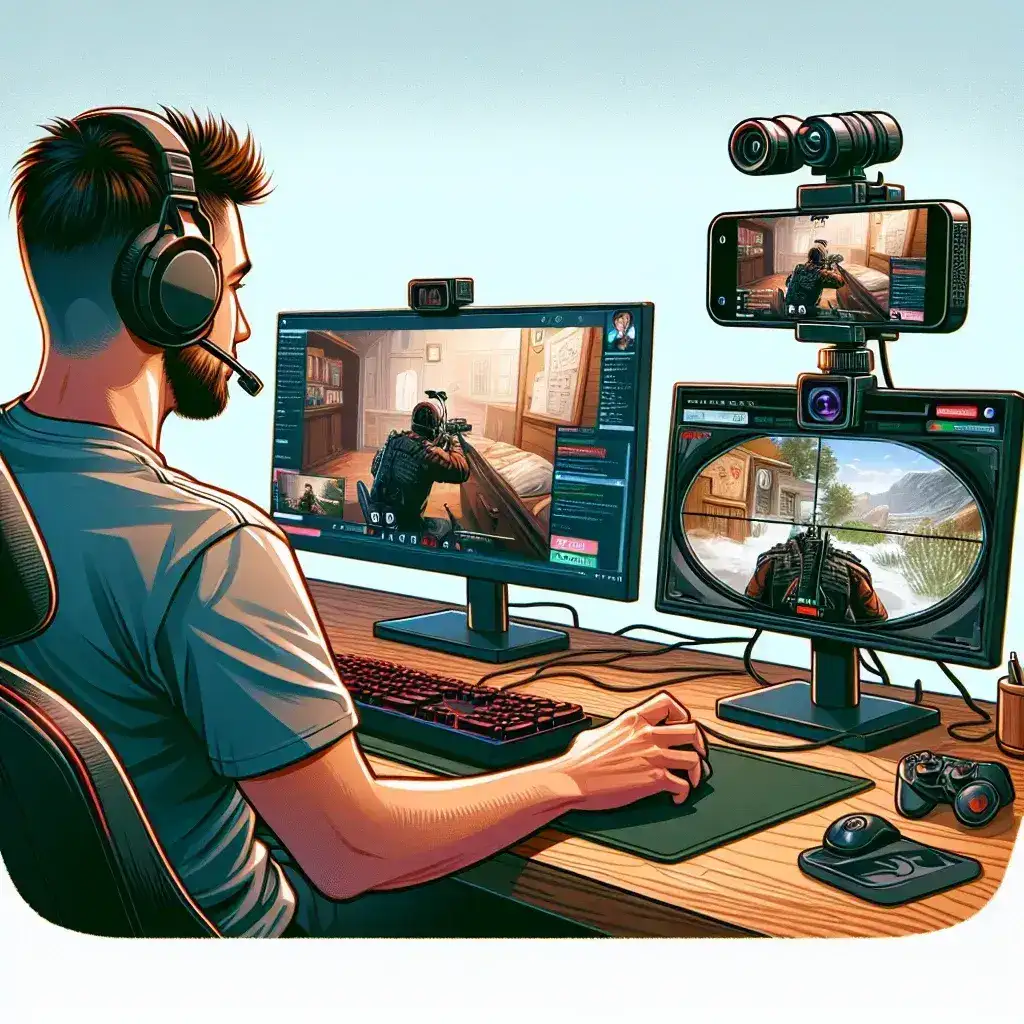How do I set up a dual webcam setup for game streaming?

Setting up a dual webcam setup for game streaming can greatly enhance the viewer experience and provide more flexibility in your streaming presentation. This comprehensive guide will walk you through the necessary equipment, software, and steps to set up a dual webcam configuration for game streaming.
Equipment Needed
Here’s a list of equipment you will need to set up a dual webcam setup:
- Two Webcams: Preferably of good quality, with at least one offering HD resolution.
- Computer: A powerful computer that can handle the processing load.
- Streaming Software: OBS Studio, Streamlabs, or any other application that supports multiple webcam inputs.
- USB Ports/HUB: Adequate USB ports to connect both webcams.
- Lighting: Good lighting setup to ensure both webcams capture clear, well-lit video.
Recommended Equipment
Here’s a table listing some recommended equipment you might consider:
| Equipment | Recommendation |
|---|---|
| Primary Webcam | Logitech C920 |
| Secondary Webcam | Razer Kiyo |
| Streaming Software | OBS Studio |
| USB Hub | Anker 4-Port USB 3.0 Hub |
| Lighting | Elgato Key Light |
Step-by-Step Guide to Setting Up Your Dual Webcam
Step 1: Install Your Webcams
Connect both webcams to your computer using the USB ports. Make sure each webcam is recognized by your computer. You can check this in your device manager if you are using Windows. Place the webcams in your desired positions, typically one facing you and another capturing a different angle or object.
Step 2: Configure Webcam Settings
Each streaming software has different methods to configure and add webcams. We’ll use OBS Studio for this guide:
- Open OBS Studio and create a new scene or choose an existing one.
- Click the “+” button under the “Sources” panel and select “Video Capture Device”.
- Name your first webcam (e.g., “Webcam 1”) and click OK.
- Select your first webcam from the dropdown menu and configure settings such as resolution and frame rate.
- Repeat the steps for the second webcam (e.g., “Webcam 2”).
- Arrange both webcams within your scene as desired, you can resize and reposition them.
Step 3: Optimize Your Settings
Optimizing your settings is crucial for ensuring a smooth streaming experience. Here are several tips:
- Resolution: Keep both webcams at the same resolution to prevent any disparity in quality.
- Frame Rate: Stick to a consistent frame rate (e.g., 30 FPS) for both to avoid lag.
- Bitrate: Adjust your bitrate settings to a level your internet connection can handle. You can use bitrate calculators available online.
- Lighting: Ensure your lighting is even and well-distributed to avoid shadows or overly bright areas.
Step 4: Test Your Setup
After setting up your dual webcams, run a test stream to check for any issues. Pay attention to both webcam feeds, ensuring that there is no stutter, delay, or quality loss. If you encounter any problems, revisit your settings and make adjustments as needed.
Additional Tips
- Cable Management: Keep your work area tidy to avoid tangled cables. Consider using zip ties or Velcro straps.
- Audio Setup: Ensure your audio quality matches your video quality. Use a good quality microphone and consider setting up noise filters if necessary.
- Backup Plan: Always have a backup plan in case one of your webcams fails during a stream. Keep an extra camera or a spare input device handy.
Conclusion
A dual webcam setup can significantly improve your game streaming by providing multiple angles and interactive elements for your audience. With the correct equipment, software, and configuration, you can create a professional and engaging streaming experience. Follow this guide to set up your dual webcams and take your game streaming to the next level.
